|
Jyotirlinga Nageshwara – Shiva Purana
Nageshwar Temple is one of the 12 jyotirlinga of Lord Shiva, the holiest of holy shrines of Lord Shiva. The Jyotirlinga enshrined in the Temple of Nagnath is known as Nageshwar Mahadev and attracts thousands of pilgrims all-round the year. Location: Nageshwar Nagnath Temple is located on the route between Gomati Dwarka and the Bait Dwarka Island on the coast of Saurashtra in Gujarat. Spiritual Significance: Anyone who ever with devotion reads the birth and greatness of this Jyotirlinga shall beget all material happiness and divine status in the end. This powerful Jyotirlinga symbolizes protection from all poisons. It is said that those who pray to the Nageshwar Linga become free of poison. The Rudra Samhita sloka refers to Nageshwar with the phrase 'Daarukaavane Naagesham'. Legend as per Shiva Purana: On the western shores of the ocean, Daruka, a very powerful Rakshasa tormented the good along with many other Rakshasas. He destroyed their sacrifices and spoiled their rites. Parvati goddess had entrusted him the supervision of that forest. Staying there, the Rakshasa Daruka and his wife terrorised the people. The harassed people sought refuge in Aurva, a great sage. Aurva said: — “If the Rakshasas torture living beings on the earth, they will die themselves although they are very powerful. Whenever the people are killed, let the Rakshasas too die.” After promising them, Aurva continued different types of penance, conferring happiness on the people. Realising the cause for the curse, the gods made attempts to fight with the demons. Rakshasas began to ponder. A difficult situation has come up. They were fighting and dying. Gods are fighting but they are not killed. On knowing that a great calamity had arrived, the demoness, wife of Daruka spoke of the boon granted by Parvati. She said, “Shiva had granted me a boon. You can go to the forest along with your people if you desire to go. How is this misery to be borne? Taking your people to the island you can stay with the Rakshasas happily.” Rakshasas took their belongings to the city in the ocean. She then stayed fearlessly in the middle; of the ocean. Staying in the city inside the ocean, the sportive Rakshasas became happy and fearless. For fear of the sage’s curse, Rakshasas did not come on the earth. They abducted travellers in the boats and imprisoned them in the city. They killed some of them. In the meantime, several beautiful boats arrived there all full of people. Rakshasas fettered them and put them in prisons. Their leader was a certain Vaishya named Supriya. His conduct was auspicious and pleasing to Shiva. The Vaishya performed the worship of Shiva there in the prison also. He taught the mantra of Shiva and the mode of worshipping the earthen phallic image to several of his fellow-prisoners. They performed there the worship of Shiva. Those who did not know the great rite remained meditating on Śiva with the five-syllabled mantra “Namaḥ Shivaya”. The Vaishya continued to perform the worship of Shiva; six months passed by without hindrance. Once an attendant of the wicked Rakshasa saw the beautiful form of Shiva in front of him. That wonderful incident was truthfully intimated to the king of Rakshasas. The king of the Rakshasas, Daruka, though very powerful was excited much. He hastened to the Vaishya and asked him, “O Vaishya, what is it that you meditate upon? Tell me the truth. Then you will not die.” He replied “I do not know.” On hearing it the Rākṣasa was angry. He incited the Rakshasas — “O Rakshasas, let him be killed.” Urged by him, they seized various weapons and rushed at the leading Vaishya whose mind was attached to Shiva, with desire to kill him. On seeing them come, the Vaishya remembered Shiva with devotion and repeated his names though his eyes indicated that he was extremely frightened. Shiva appeared out of the crevice with an excellent temple with four doors. Seeing in its midst the wonderfully brilliant form of Shiva along with his attendants he worshipped him. On being worshipped, Shiva became delighted. He gave him the Pasupata missile. He immediately slew all the Rakshasas with all their attendants and adjuncts. He saved thus his devotee. Indeed, Shiva is the slayer of the wicked. After killing all of them, Shiva the creator of his Oracles and who assumes bodies in the course of sports granted a boon to the forest. May the rites and activities of the four castes, Brahmins, Kshatriyas, Vaishyas and Sudras flourish in this forest always. Let there never be people of the Tamasic qualities. Let there be excellent sages, the propounders and the followers of the Shaiva cult. In the meantime, the Rakshasi wife of Daruka dejected in her mind, eulogised Parvati. The goddess being pleased said “What shall I do?” She replied— “Let my race be protected by you”. “I shall protect your race. I say this truth to you.” Saying this the Goddess quarrelled with Shiva. On seeing the goddess furious, the lord, bound by the boon granted by him, replied with pleasure. “Do as you please”. On hearing the words of her husband Shiva, the delighted Parvati laughed and spoke these words. Parvati said:— “Your words will be true at the end of this Yuga. Till then, I think, there can be the Tamasic creations as well. This Rakshasi is my own Sakti. She is the most powerful among the Rakshasis. Let her rule over the kingdom of the Rakshasas. These wives of the Rakshasas will give birth to sons. I have permitted all of them to live jointly in the forest. On hearing these words of Parvati, lord Shiva was delighted in his mind and spoke these words. Shiva said; — “O beloved, if you say so, please listen to my words. I will stay in this forest with pleasure for protecting the devotees. He who maintains the discipline of rites and activities prescribed for different castes and has a sight of me with pleasure here will become an emperor. Or, at the end of the recurring cycle of Kali or in the beginning of Treta Age, the leading king equipped with a vast army, famous in the name of Virasena son of Mahasena, will have a sight of me. He will be a very valorous devotee of mine. After viewing me he will become an emperor.” The Jyotirlinga form of Shiva came to be known as Nageswara. Goddess Parvati became Nageswari. Both of them are favourites of the devotees. Virasena, son of Mahashena, was a great favourite of Shiva. He was born of a Kshatriya family in the beautiful land of Niṣadha. Worshipping the earthen image of the lord, Virasena performed a severe penance, lasting for twelve years. Then Shiva, the delighted lord of the gods, became visible to him and said: — Make a fish-like canoe of wood. Coat it with tin and other metals. O Virasena, I shall create Yogamaya and give it to you. Enter the canoe accompanied by Yogamaya and your men. Proceed to the island in the Western Ocean. Enter the crevice made by me. Perform the worship of Nageshvara. Thereafter secure the missile Pauhupata and slay the Rakṣasi and others. When I appear before you; you will not remain deficient in anything. Parvati’s strength will grow to be complete. The Mlecchas of the forest will become pious and auspicious. After saying this to Virasena and bestowing his mercy on everyone lord Shiva, the destroyer of miseries, vanished there itself. Having received the boon form Shiva the supreme soul, Virasena became competent to do everything, of course. Thus is the manifestation of Nageshvara, the lord in the form of a Jyotirlinga conferring the attainment of desires to the three worlds. Reference: Shiva Purana, Koṭirudra Saṃhita, Chapters – 29, 30
0 Comments
Jyotirlinga Ghushmesha or Grishneshwar - Shiva Purana
The Grishneshwar Jyotirlinga Temple, sometimes referred to as the Ghrneshwar or Ghushmeshwar, Kusumeswarar, Ghushmeswara, etc. Grishneshwar Temple is the holy abode and one of the 12 jyotirlinga of Lord Shiva. The word Ghrneshwara means "lord of compassion" and it is an important pilgrimage site in the Shaiva tradition, which considers the last or twelfth Jyotirlingas. Location: Grishneshwar temple is located at a distance of 11km from Daulatabad and 35 kms away from Aurangabad and about 2 km away from the UNESCO-listed Ellora Cave in Maharashtra. Daulatabad was once known as Devagiri. Temple: It is believed that the temple structure was destroyed by the Delhi Sultanate in the 13th and 14th-century, and it was rebuilt several times after being destroyed during the Mughal-Maratha conflict. It was rebuilt in the present form in the 18th century under the sponsorship of Queen Ahilyabai Holkar of Indore. Temple is constructed in the traditional South Indian temple architectural style, the Grishneshwar Temple exhibits an elaborately designed five-tier shikhara. The temple complex comprises a sanctum sanctorum, which is a square room measuring about 289 square feet, and inner chambers. Sculptures and carvings of several Hindu Gods and Goddesses adorning the temple complex. The Dashavataras or the ten forms of Vishnu depicted on red stones. Spiritual Significance: Shiva appeared here and informed that He shall be named as Ghusmesa. Ghusmesa shall confer happiness. Phallic image named Ghusmesa is auspicious and famous. The lake is the storehouse of phallic images. Hence it is famous in the three worlds in the name of “Shivalaya.” This lake yields desires by its mere sight. Legend as per Shiva Purana: There is the excellent mountain in the Southern region named Deva. A certain brahmin Sudharma who was the most excellent among the knowers of Brahman and who was born of Bharadwaj Family lived near it. His beloved wife Sudeha was interested in Shaivay cult and sacred rites. She was skilful in all household activities and she devoutly served her husband. The excellent brahmin Sudharma worshipped gods and guests. He was devotedly attached to the Vedic path and scrupulously maintained the sacrificial fires. He had the brilliance of the Sun. He performed Sandhya prayers thrice a day. He taught disciples and was an expert in the Vedas and Sastras both. He was affluent and had also the qualities of gentlemanliness. He was a liberal donor, a devotee of Shiva, a favourite of his followers and he engaged himself in the sacred rites of Shiva-cult. A long period in his life thus passed when he continued his religious rites but no son was born to him. His wife’s menstrual periods were fruitless. She did not conceive. He did not grieve over this because he realised the reality of different things. He knew that the soul is the uplifter of the soul and the soul is the sanctifier of the soul. Thinking thus he did not feel aggrieved even mentally. But Sudeha was distressed for not having a son. Every day she implored her learned husband to strive for the acquisition of a son. He used to reproach her saying, “O gentle lady, there is no son, no mother, no father, no lover. Everyone is selfishly inclined in the world, there is no doubt about this. Know this particularly with a keen intellect. Do not be aggrieved. O gentle lady, misery shall be eschewed by you, certainly. O one of auspicious rites, you shall not pester me like this every day.” After enlightening her, he became interested in the worship of the lord. He was perfectly contented. He did not feel the misery or joy of mutually contrary interests. Once Sudeha went to the neighbour’s house for a friendly chat but a quarrel arose there. She was reproached by the neighbour’s wife as natural to women. Sudeha was aggrieved with her harsh words. The neighbourly woman said: — “O barren woman, why are you arrogant? I have son who will inherit my wealth. But there is none to inherit your property. Undoubtedly the king will confiscate your estate. Thus, reproached by her she returned home depressed. She narrated to her husband all what her neighbour had said to her. The intelligent brahmin was not grieved by hearing it. He said “Let her say what she wishes, O beloved, what is destined to happen will happen.” Thus, pacified and consoled again and again by her husband she did not stop worrying. She again pleaded. Sudeha said: — “You are my husband. Somehow you shall beget a son. O excellent among men, otherwise I shall cast off this body.” On hearing what she said, Sudharma the excellent brahmin, harassed by her importunities, mentally remembered Shiva. The alert brahmin offered two flowers to the sacrificial fire. He thought in his mind that the right-side flower would yield a son. Making this as a condition the brahmin told his wife. “You shall take one of these two flowers to decide about the acquisition of a son” 27-28. She thought “I will surely have a son. Let the insignia flower come to me.” Then she bowed to Shiva and the sacrificial fire. After praying again, she picked up one of the flowers. The insignia flower was missed by her due to delusion caused by Shiva’s desire. On seeing it the husband sighed deeply. Remembering the lotus-like feet of Shiva he spoke to his beloved. Sudharma said: — “O beloved, how can what be ordained by the lord be otherwise. Cast off your vain hopes. Render service to the lord.” After saying so and giving up hope himself, the brahmin became engaged in sacred rites and meditation on Shiva. Yearning for a son Sudeha did not leave off her pleadings. With palms joined in reverence and bending her head she lovingly said to her husband. Sudeha said: — “Let there be no son born of me. With my consent you shall take another wife. Undoubtedly, she will bear you a son.” Requested thus by his beloved wife, that brahmin the most excellent of the devotees of Shiva and fond of sacred rites spoke to her. Sudharma said: — “Our miseries have gone off, O beloved, do not put obstacles in our holy rites now.” Although prevented thus, she brought her mother’s younger daughter to her house and said to her husband “Take her. Now you say that she must be my beloved wife. But should she give birth to a son you will begin to be jealous of her.” When thus warned by her husband, Sudeha joined her palms in reverence and spoke to him: -- “O excellent brahmin, I will not be jealous of my own sister. Please marry her and beget a son. I urge upon you.” Thus, implored by her, Sudharma married that lady Ghushma with due ceremonies. After marrying her he requested Sudeha, “O my pious beloved, this is your younger sister. You must bring her up.” Sudeha served her sister like a hired wench eschewing all opposition and lovingly nurtured her. The junior wife with the consent of her sister, made hundred and one earthen idols every day. According to the sacred rules Ghushma rendered devotional services to these images and threw them in the neighbouring lake. Thus, she performed the wish-yielding worship of Shiva every day leaving them off and invoking them again in accordance with the rules of devotional service. Performing the worship of Shiva thus regularly she completed a hundred-thousand images and their worship which would yield the benefits of all desires. By the mercy of Shiva, a son was born to her. He was beautiful, fortunate and endowed with all auspicious qualities. On seeing him the brahmin was much delighted. Being the most excellent of all who knew virtue and engrossed in the virtues of knowledge he enjoyed the pleasure with due detachment. Then Sudeha grew fiercely jealous of her. Her heart which was cool and quiet before began to blaze like fire now. On seeing the son of the younger sister, the elder sister was much distressed. Unable to see her pleasure she became inimical. Her people celebrated the birth of a son continually. But she could not bear the sight of the beautiful child. On seeing the son, a great favourite of the parents and endowed with all good qualities, her heart began to blaze like fire. In the meantime, many brahmins came there offering their daughters in marriage. Sudharma celebrated the marriage of his son duly. Sudharma was extremely delighted in the company of Ghusma. All the relatives honoured Ghusma much. On seeing that, Sudeha blazed furiously in her mind. Extremely distressed she began to lament, “O I am doomed.” When the daughter-in-law came to the house and the son was duly married, Sudharma evinced his enthusiasm to both the wives with an intention of delighting them equally. But Ghusma was delighted and Sudeha was distressed. Unable to bear her happiness, she fell on the ground. Ghusma said: — “These are your own son and daughter-in-law not mine.” But the daughter-in-law considered Sudeha her mother-in-law and the son considered her his mother. The husband too loved the elder more than he loved the younger. Still the elder wife retained dirt in her mind. One day the senior wife Sudeha, extremely distressed in her heart, thought how she could subdue her misery. Sudehā said: — “Certainly the fire in my heart can be tranquilised only through the tears of Ghusma caused by her misery and not otherwise. So, I shall kill her son today, the son that speaks pleasing words to her. What is destined to happen shall happen. This is my final decision.” The inimical nature among co-wives is extremely ruthless and suicidal. The wicked and the mean do not ponder what shall be done or not done. 15. One day during the night as the son was sleeping with his wife, she took a big knife and cut off his limbs. The senior wife cut off the limbs of Ghusma’s son at night. Strong that she was she took them to the lake where the earthen images of Shiva were usually hurled by Ghusma. After casting off the limbs into the lake she returned and slept. In the morning Ghusma got up and performed her daily household duties. Sudharma too performed his daily sacred rites. In the meantime, the senior wife too got up and performed her duties with great pleasure, now that the fire in her heart had been tranquilised. Getting up in the morning, the daughter-in-law saw to her horror the bed wet with blood and a few scattered pieces of the body. She told her mother-in-law, “Where has your son gone? The bed is wet with blood. Pieces of the body are also seen.” The daughter-in-law fond of her husband began to lament— “O I am doomed. O my mother of holy rites, who has perpetrated this wicked deed?” The senior wife, though delighted inwardly, showed great distress outwardly saying “O I am doomed!” Ghusma heard the pitiable lamentation of her daughter-in-law but did not leave off her sacred rite, the daily worship of Śiva’s earthen image. Her mind did not exhibit any agitation. The husband too remained calm till the completion of the sacred rite. At noon when the worship was concluded she looked at the terrible bed. Still Ghusma did not show signs of grief. “He who has given this boy will protect him too. The annihilator of Kala, the goal of the good, is famous as a favourite of his devotee. Our protector, the sole lord, Shiva is like a gardener. He separates those whom he has united. What can I gain by worrying over it?” Realising this truth, being emboldened in dedicating herself to Śiva she did not grieve much. Taking the day’s earthly phallic images, she went towards the bank of the lake repeating the names of Shiva, maintaining the normalcy of her mind as afore. When she cast off the earthen phallic images and returned, she saw her son standing on the bank of the lake. The son said: — “I shall meet my mother. After dying I have been resuscitated, thanks to the power of her virtue and the mercy of Shiva.” On seeing her son restored to life the mother was not delighted as she was not distressed before. At that time, lord Shiva, appeared before her immediately in the form of a mass of splendour. He said delightedly. Shiva said: — “O excellent-faced lady, I am delighted. Mention the boon you wish to have This boy had been killed by that wicked lady. I shall kill her with my trident. Bowing down to Shiva she requested for the boon “O lord, Sudeha, my sister, must be protected by you.” Shiva said: — “Harm has been done by her. Why should you render help to her? Sudcha the perpetrator of wicked deeds must be killed. Ghusma said: — “No sin stays, the moment you are seen. Now, on seeing you her sin will be reduced to ashes. Sin is far removed at the mere sight of the person who renders help to those who harm him. These wonderful words of the lord have been heard by me O lord. Hence, O Sadashiva let it not be done otherwise.” Thus, requested by her, lord Shiva the ocean of mercy, favourably disposed towards his devotees was delighted and spoke thus. Shiva said: —"O Ghusma, request for another boon. I shall grant you what is beneficial to you. I am delighted at your devotion and your nature of being free from aberrations.” She said after hearing his words “If a boon is to be given by you, you shall stay here in my name for protecting the worlds.” Then the delighted lord Shiva said— “I shall stay here in your name. Reference: Shiva Purana, Koṭirudra Saṃhita, Chapters - 32, 33 Linga is truly Shiva. All is revealed by Siva who is the very essence of Consciousness and Knowledge. Nothing can reveal Him. Thus, the Linga is the sole, Self-shining reality. Shiva is Consciousness Unmanifest.
The Amarnath Cave has a special significance in the Hindu religion. The Shiva Lingam at the Amarnath shrine is a Swayambhu lingam, which waxes and wanes with the Moon's cycle. Location & Route Amarnath is a Hindu shrine located in located in Lidder Valley, Anantnag district of the Kashmir, India. The cave is situated about 168 km from Anantnag city, the district headquarters, 141 km (88 mi) from Srinagar, the capital of Kashmir. The pilgrims travel in a group in the month of sharavan (July–August) from Srinagar. Two routes of the pilgrimage are popular. One route is from Jammu – Pahalgam – Chandanwari - Pissu Top - Sheshnag - Panchtarni - Amarnath cave. Another route is from Jammu - Baltal - Domail - Barari – Sangam - Amarnath cave. Temple The shrine is a big natural cave of about 45 meters (150 ft.) in height, 30 meters (100 ft.) wide and 60 meters (200 ft.) in length. It is surrounded by glaciers, snowy mountains and is covered with snow most of the year, except for a short period of time in summer when it is open to pilgrims. The lingam is a natural stalagmite formation located at the Amarnath Mountain which has a peak of 5,186 metres (17,014 ft), and inside a 40 m (130 ft) high cave at an elevation of 3,888 m (12,756 ft). There are two holes in the northern wall of the cave from which water trickles out and freezes into ice almost immediately. One of the holes is bigger and below that a huge linga of snow is formed. This is the famous Amaranath - linga. On its left and right sides there are two more formations of ice, known respectively as Ganesha and Parvati. The cave faces south and the rays of the sun do not fall directly on the linga. Spiritual Significance Pilgrimage to holy places is an integral part of the religious observances in Hinduism. Though the number of such places is extremely large, only a few have attained great celebrity over the centuries. The Amaranath (Shiva) cave in Kashmir is one such place. Its importance and antiquity were well-known even by the twelfth century since Kalhaṇa’s Raja- tarangini mentions it. Visiting the cave-temple on the Shravaṇ Purnima day (July-August) is considered extremely auspicious since, according to the historical lore, Shiva appeared in this cave on this day. He made the gods immortal by feeding them with amṛta or nectar. Hence it is named as Amaranath, ‘Lord of the immortals’. Hindu Scriptures Amarnath finds mention in Rigveda, Skanda Purana, Mahabharata and many other ancient texts. Research works throw ample light on the history/origins of the Amarnath pilgrimage. Some of the most relevant ancient texts, historical histories and research works in this regard are: Nilmata Purana, written in the sixth century; Bhrigu Samhita and Amarnatha Mahamatya, which are said to have been composed before the sixth century. Bhrigu's Amarnath Mahatmya identifies a number of locations on the pilgrimage on the way to the Amarnath cave: Shurahyar, Shivpora, Pandrethan, Pampore, Javati, Awantipur, Barsu, Jaubror, Belihar, Wagahama, Chakreshwar (Tsakdar), Hari Chandar, Sthalwat (Thajwor), Suryai Gohwat (Sriguphvara), Lambodari, Sirham, Bodrus, Bala Khelyan, Ganish, Mammaleshwar, Bhrigupati Kshetra, Nila Ganga, Pissu Hill, Shesh Nag, Wavjan, Panchtarni, Amravati. On the return journey Mamleshwar and Naudal are crossed. According to legend, Sage Bhrigu was the first to have discovered Amarnath. A long time ago, it is believed that the Valley of Kashmir was submerged underwater, and Sage Kashyapa drained it through a series of rivers and rivulets. As a result, when the waters drained, Bhrigu was the first to have darshan of Shiva at Amarnath. Legend As per legend, once Maa Parvati asked Shiva that when He started wearing the beads of heads. To this question, Lord Shiva replied whenever Parvati was born. Parvati then queried: why are you immortal and I keep on dying again and again? Lord Shiva said that this is due to the Amar Katha. Parvati insisted to hear that Amar Katha and after convincing Lord for a long time, Lord Shiva decided to narrate that story to her. To narrate the story, Lord Shiva started looking for an absolutely lonely place so that no living being can hear that Amar Katha except for Parvati. He finally found the Amarnath Cave. Lord Shiva had chosen this cave to describe the secrets of immortality and formation of the universe to Maa Parvati. After this, Lord Shiva entered this holy Amarnath Cave with Parvati. It is believed that he sat himself on the deer Skin and took a samadhi. To further make sure that not even a single living being could hear the secret Amar Katha, He created a rudra named Kalagni and ordered him to set fire around the cave so that everything living around that place could be destroyed. He then started narrating the story of immortality to Parvati. But in spite of all these efforts, one egg remained protected under the deer skin on which the Lord was sitting. A pair of pigeons were born out of that egg and supposedly became immortal. Pilgrims can still see the pigeon pair while going towards the Amarnath Cave. It is believed that Shiva left Nandi, the bull, at Pahalgam (Bail Gaon). At Chandanwari, he released the Moon from his hair (Jata). On the banks of Lake Sheshnag, he released his snake. At Mahagunas Parvat (Mahaganesh Mountain), he left his son Ganesha. At Panjtarni, Shiva left behind the five elements - Earth, Water, Air, Fire and Sky. As a symbol of sacrificing the earthly world, Shiva performed the Tandava Dance. Then, finally, Shiva entered the Amarnath Cave along with Parvati and both of them manifested into a Lingam made of ice. Shiva became the lingam of ice and Parvati became the yoni of rock. Although the existence of the Holy Cave has been mentioned in the Puranas, the popular story narrated by people about the re-discovery of this Holy Cave is of a shepherd Buta Malik. Story goes like this: a saint gave Buta Malik a bag full of Coal. On reaching his home when he opened the bag, to his utter surprise the bag was full of gold coins. This overwhelmed him with joy. He ran to thank the Saint. But the Saint had disappeared. Instead, he found The Holy Cave and the Ice Shiv Lingam there. He announced this discovery to the Villagers. Then onwards this became a sacred place of Pilgrimage. Bhimashankar Temple is one of the 12 jyotirlingas, the holiest of holy shrines of Lord Shiva. The image of Nandi - Lord Shiva's vahana is installed just at the entrance of the temple. It is believed that the ancient shrine was erected over a Swayambhu Linga or a Self-Emanated Shiva Linga. Thus, the Linga is exactly in the centre of the floor of the Garbagriha or the Sanctum.
Location: Bhimashankar Temple is situated in the ghat region of the Sahyadri hills in the village of Bhavagiri, 50-km north west of Khed, about 127 kms from Pune in Maharashtra. Bhima Shankar Temple lies on the banks of the river Bhima. Bhimashankar is also the source of the river Bhima, which flows southeast and merges with the Krishna River near Raichur. Temple: The temple was built in the Nagara style and according to the legend, the ancient shrine was erected over a Swayambhu Linga or a Self-Emanated Shiva Linga. Spiritual Significance: Shiva stays here and known as Bhimasankara—a phallic image which shall be worshipped always. It will avert mishaps and be conducive to the attainment of all desires. Legend as per Shiva Purana: There was a Rakṣasa of great virility named Bhima who harassed all living beings and who spoiled virtuous rites always. This powerful demon was born of mother Karkaṭi and father Kumbhakarṇa. On his asking, mother informed him that Kumbhakarṇa the younger brother of Ravaṇa, that powerful demon was killed by Rama along with his brother. Infuriated hearing this, Bhima went to perform a great penance of Brahma. Due to the penance, a terrible fiery splendour arose from his head. Scorched by it the gods sought refuge in Brahma asking him, to grant him his prayer. Brahma bestowed him a boon of a great strength, as desired by him. Bhima of terrible exploit conquered the gods including Indra at the outset and ousted them from their respective positions. Then in a battle he conquered Vishnu. After conquering the lord of Kamarupa who was a servant of Shiva, including his kingdom and its adjuncts was seized by that wicked Bhima. The virtuous king made an excellent earthen idol of Shiva and started its worship. The couple, devoutly engaged in the propitiation of Shiva worshipped the deity, with single-mindedness. Harassed gods eulogised Shiva by means of prayers. Shiva was delighted and said them, “I shall kill Bhīma who is wicked, whose power is enhanced by the boon granted by Brahma and who has insulted you.” With a desire to accord benefit to him Shiva stayed with his devotee along with his Gaṇas. The lord of Kamarupa in front of the earthen idol of Shiva started meditation. Then somebody informed the Rakshasa, “The king is performing a black magic against you.” On hearing it the Rakshasa was infuriated. With a desire to kill him he seized a sword and rushed at the king. Bhima threatened the king and asked him to tell the truth and to remove all the idols of Shiva. Emboldened and meditating on lord Shiva, the king did not comply with your threats. Thus, addressed by the king, the demon rebuked him and hurled his terrible sword at the earthen idol. No sooner did the sword touch the earthen idol than Shiva manifested himself from the earthen idol. Shiva split the sword into two with his Pinaka. His spear was then hurled by the Rakshasa. That spear too of the wicked Rakshasa was split into a hundred pieces by Shiva. Then a lance was hurled at Shiva by him. It too was split into a hundred-thousand pieces with his arrows by Shiva. Then a huge iron club was hurled at Shiva by him. Within a trice, it too was reduced to small pieces like gingelly seeds by Shiva with his trident. On request of Narada and deities, Shiva reduced the Rakshasa to ashes with only a Huṃ sound for his weapon. Reference: Shiva Purana, Koṭirudra Saṃhita, Chapters - 20. 21 Jyotirlinga Vaidyanatheshvara – Shiva Purana
Vaidyanatheshvara is also called Vaijnath Temple and Baidyanth Dham shrine. It is revered as one of the twelve Jyotirlingams of Shiva. The Maa Parvathi temple is tied up with the main temple, with huge red sacred threads which is unique and worthy of reverence, showing the unity of Shiva and Shakti. Location: Vaidyanatha Jyotirlinga temple, also known as Baba Baidyanath dham and Baidyanath dham is one of the twelve Jyotirlingas, the most sacred abodes of Shiva. It is located in Deoghar in the Santhal Parganas division of the state of Jharkhand, India. Temple: Although the name of the builder of the temple is not traceable, certain parts of the front portion of the temple are said to have been built by Puran Mal, an ancestor of the Maharaja of Giddhour, in 1596. During the Mughal period, Raja Man Singh, the ruler of Amber, is said to have built a pond here, which is known as Mansarovar. The temple faces the east and is a plain stone structure with a pyramidal tower, which is 72 ft high. Spiritual Significance: Devotees of Lord Shiva believe that by sincere worship of Vaijnath Jyotirlinga a person is relieved of all worries and miseries in life. It is also said that by worshipping in the shrine a person attains Moksha and all types of happiness. As a tradition, devotees carry ‘Kanwars' on their shoulders and complete their travel here. Legend as per Shiva Purana: Ravaṇa the arrogant minded leader of Rakshasas propitiated Shiva with devotion on the excellent mountain Kailasa. Though the worship continued for a long time, Shiva was not delighted. Then Ravaṇa performed another penance to delight Shiva. The glorious Ravaṇa, scion of the family of Pulastya dug a deep ditch among the groves of trees on the southern side of Himavat, the mountain that is usually the spot of Siddhi. He then kindled fire within it. Near it he installed the idol of Shiva and performed a sacrifice. He performed three types of penance. During the summer he stationed himself in the midst of five fires, during rainy days he lay on the bare ground and in the winter, he stood within water and performed his penance. Thus he performed penance a great deal. Even then Shiva the supreme soul, difficult to be propitiated by the wicked was not delighted. Then the ambitious Ravaṇa began to worship Shiva by cutting off his heads. In the due performance of the worship, he cut off his heads one by one. Thus, when he had cut off his nine heads and one head remained, the delighted Shiva favourably disposed towards his devotees, appeared in front of him. Shiva reinstated the severed heads. Ravaṇa asked the boon to give him unequalled strength. Shiva said, “So be it.” Then he asked to take His image to Lanka. Shiva said: — “Let my excellent phallic image be taken to your abode. Wherever this phallic image is placed on the ground il will become stationary. There is no doubt about it. Do as you please.” Thus warned by Shiva, Ravaṇa, the king of Rakshasas, took it saying “So be it” and went to his abode. Thanks to Shiva’s Maya, he became desirous of passing urine while yet on his way. Lord Ravaṇa of the family of Pulastya could not stop this urge. He saw a cowherd there and requested him to hold the image. About an hour elapsed, when Rāvaṇa did not return, the cowherd became nervous. He was distressed by its heavy weight. He placed it on the ground. The phallic image remained fixed there. O sage, that phallic image is known as Vaidyanatheshvara. It yields all desires and dispels sins at its very sight. It is famous in the three worlds. It grants worldly pleasures here and salvation hereafter. After securing the great and excellent boon, the great Asura Ravaṇa returned to his abode and mentioned everything to his beloved wife. He rejoiced much. O great sages, on hearing everything Indra and other gods and sages too became extremely dejected. They spoke to one another, “Ravaṇa is a wicked knave. He is evil-minded and hater of the gods. After securing the boon from Shiva, he will make us more miserable. What shall we do? Where shall we go? What will happen now? What evil deeds this wicked fellow will not do after becoming more efficient?” Thus distressed, Indra and other gods, and the sages too invited Narada and asked him dejectedly. The gods said: — “O excellent sage, you can do everything. O celestial sage, find out some means to dispel the grief of the gods.” Narada said: — “O gods, give up your sorrow. I shall plan out and go. By the mercy of Shiva, I shall carry out the task of the gods.” Thus saying, the celestial sage went to Ravaṇa’s abode. After receiving the formal welcome, he spoke with great pleasure, “O excellent Rakṣasa, you are a blessed sage, a great devotee of Shiva. At your sight today my mind is much delighted.” He listened the entire details how Shiva was propitiated by him and the boon secured. Ravana informed him that he particularly worshipped that Jyotirlinga and bowed to it and have returned home with the intend to conquer the three worlds. Then Narada said: — “O excellent Rakshasa, I shall tell you what is beneficial to you. You shall do as I say and not otherwise at any cost. What you said just now that everything was granted by Shiva should never be taken for granted. What will he not say in his state of mental aberration? It will never come out to be true. How can it be proved? You are my favourite. Hence you shall go again and do this for your own benefit. You shall endeavour to lift up Kailasa. Everything will come out to be fruitful only when Kailasa is lifted up. It is doubtlessly so. You replace it as before and return happily. Decide ultimately and do as you wish.” Ravaṇa, deluded by fate, considered it beneficial when thus advised. Believing in the advice of the sage he went to Kailasa. Reaching there he lifted up the mountain. Everything on the mountain became topsy turvy and mixed up with one another. On seeing it, Shiva said “What has happened?” Shiva cursed him for being arrogant of his strength. Shiva said: — “O Ravaṇa, do not be arrogant. A destroyer of the arrogance of your mighty hands will come soon. Coming to a firm decision, the mighty Ravaṇa, deluded of his own strength, destroyed the arrogance of his enemies and brought the whole universe under his control. Due to the divine weapons and great strength secured at the behest of Śiva, there was none to counterchallenge Ravaṇa in fight. By listening to this glory of lord Vaidyanatha the sinners get their sins reduced to ashes. Reference: Shiva Purana, Koṭirudra Saṃhita, Chapters - 28 Jyotirlinga Tryambakshevara, amongst 12 Jyotirlinga, is three faces embodying Lord Brahma, Lord Vishnu and Lord Rudra. Due to excessive use of water, the linga has started to erode. It is said that this erosion symbolizes the eroding nature of human society. The Lingas at Tryambakeshwara are covered by a jewelled crown which is placed over the Gold Mask of Tridev (Brahma Vishnu Mahesh). The crown is said to be from the age of Pandavs and consists of diamonds, emeralds, and many precious stones. The crown is displayed every Monday from 4-5 pm (Shiva). Location: Shri Tryambakeshwara Temple is located at a distance of about 28 km from Nashik, Tryambakeshwara temple is one of the 12 jyotirlinga of Lord Shiva, the holiest of holy shrines of Lord Shiva. There is a mountain named the Brihmagiri Mountain 18 K.M. from the city of Nasik in the Nasik district. This is one of the parts of the Sahayadri. The city of Trimbakeshwar is located in the bottom of this mountain. This is a beautiful natural place with the cold weather as it is situated 3000 ft. above from the sea. There are two different routes to get to here. From Nasik to Trimbakeshwar, it is only 18 K.M. This route was built by the help of Shri Kashi Nath Dhate in A.D. 871. Temple: The entire black stone temple is known for its appealing architecture and sculpture. Three sources of the godavari originate from the brahmagiri mountain. Introduction of the holy place Shri Tryambakeshevara 500 years back from now there was built a city which later on became famous as Trimbakeshwar. In the period of the Peshwas regime, Nana Saheb Peshwa had instructed to construct the Tryambakeshwara temple and developed and beautified the city of Trimbakeshwar. Spiritual Significance: A man who takes bath there becomes worthy of attaining salvation after immediately eschewing the sins and securing perfect knowledge which is difficult of access. Legend of Tryambakeshwara as per Shiva Purana: Formerly there was an excellent sage named Gautama. His wife Ahalya was extremely virtuous. A penance extending to ten thousand years was performed by him on the Brahmagiri mountain in the southern quarter. Once a terrible drought lasting for a hundred years occurred there. All the people were put to great distress. Then the sages and other men, the beasts, birds and the deer of the forest went to the different quarters. Gautama performed penance of Varuṇa for six months. Varuna, the god of waters, appeared and asked him for a boom. On his asking for the everlasting water, Varuna advised him to dig a ditch there. When this was said, a ditch of a hand’s depth was dug by him. It was filled with divine water by Varuṇa. Varuṇa said: — “O great sage, let there be a perennial supply of water in this ditch that has become sacred. This will become famous on the earth by your name. Charitable gifts made here, rites performed here, penance pursued here, the sacrifices done here for the gods and the Shraddha offered to the manes, everything will be imperishable.” This is the nature of the excellent people that they cannot bear others’ misery. They consider others’ misery their own and try to eradicate it. Trees, gold, sandal paste and the sugarcane exist for the enjoyment of the people. Men similarly competent are very rare in the world. A kind man, a man unpuffed by arrogance, a person habitually helping others and a person with perfect control over his sense-organs, these are the four holy pillars that support the earth. Having secured rare water thus, Gautama performed his routine and ceremonial rites duly. Thereafter he sowed different food-grains and barleys there itself for the performance of his sacrifice. On hearing of it, the sages came there in thousands. Many beasts, birds and other living beings flocked there. They sowed food-grains for their livelihood. There was great joy and bliss in that forest, thanks to the power of Gautama. Once Gautama sent his disciples there for water. Carrying out his orders they reached the spot with the water-pots in their hands. Many of the womenfolk who had assembled there for water saw the disciples of Gautama who had come for water. They prevented them from taking water. The disciples returned and informed the wife of the sage Gautama. The wife of the sage took them with her, pacified those women, herself took water and gave it to Gautama. The excellent sage performed the routine rites with that water. The other women, the wives of the sages, became infuriated and rebuked her. They returned to their huts with evil intentions lurking in their minds. The entire incident was distorted and intimated to their husbands by those evil-minded women. On hearing their words, the great sages became furious with Gautama as it was destined to be. The infuriated sages of crooked intellect worshipped Ganesh with various articles of worship in order to put obstacle in the activity of Gautama. Ganeshvara appeared to bless them. The sages asked for the boon that Gautama be turned out of his hermitage after being rebuked by the sages. Gaṇesha said: — “A wicked man never attains saintly nature nor docs a saintly man assume perversion at any time. Formerly when you were distressed by starvation, the sage Gautama afforded you happiness. Now you intend to inflict misery on him. This is not proper. Please think over this and choose another boon.” The sage did not pay heed. Gaṇesha said: — “I shall do what is being requested by you all. What is destined to happen will surely happen. After saying this he vanished.” Gautama did not know the evil intention of the sages. He went on performing his routine along with his wife with delighted mind. There were food-grains and barleys in Gautama’s field. Gaṇesha assumed the form of a feeble cow and went there. The cow, as a result of the boon began to eat the food-grains and barleys. In the meantime, Gautama happened to come there casually. Compassionate by nature, he warded off the cow with a bunch of grass blades. No sooner was it touched by the blades of grass than the cow fell down dead even as the sage was watching it. The sages and their wicked wives who were hiding there began to shout, “O see, what is done by Gautama.” The bewildered Gautama called Ahalya and spoke with a dejected, distressed mind. Gautama said: — “what has happened? How did it happen? Certainly, lord Shiva is angry. What should be done? Where shall we go? The sin of slaughter has befallen me.” In the meantime, the brahmins reproached Gautama. The wives of the brahmins tormented Ahalya with threats. The evil-minded sages said: — “Your face is not fit to be seen. Go hence. If a person sees the face of a cow-killer, he shall take bath in full dress. As long as you stay in the midst of the hermitage, the sacrificial fires and the manes will not accept our gifts. Hence, O sinner, O slayer of a cow, go somewhere else along with your followers. Do not delay.” Saying this, they pelted him with stones. They inflicted pain on him and Ahalya with insulting words. The sages said: — “Without expiation purity cannot be attained. Hence, for the sake of purification you shall perform the rites of atonement. Go round the earth three times announcing your sin. After returning to this place perform the holy Vrata for a month. If you go round this mountain Brahmagiri hundred and one times you can attain purity. Or you fetch water from Ganga and perform the ceremonial ablution. Propitiate lord Shiva making a crore of his phallic images. At the outset, you do circumambulation of the mountain eleven times. Taking bath in Ganga you will become pure thereafter. Performing the ablution of the earthen phallic image of Shiva with a hundred potful of water, the expiatory rite will be completed.” Accordingly, Gautam sage did circumambulation of the mountain and made earthen phallic images of Shiva and worshipped them. The chaste lady Ahalya too acted accordingly. Shiva was delighted and appeared before Gautama accompanied by his Gaṇas to bless him. Gautama asked the boon to make him sinless. Shiva blessed him to be contented, sinless and that people become sinless on seeing you. Shiva informed him that he has been deceived by the wicked knaves and they have been the sinners and evil minded. On hearing the words of Shiva, the sage was greatly surprised. After bowing to him with devotion) he spoke again to him with palms joined in reverence that they have rendered great help. If they had not done like this, how could I have had your vision? On hearing his words, lord Shiva became all the more delighted. Looking at Gautama mercifully he replied, “O leading brahmin, you are a blessed sage. You are the most excellent among sages. Realising that I am highly delighted, you choose the excellent boon.” Gautama said: — “O lord of gods, if you are delighted, may Ganga be given to me. Render help to the worlds. Obeisance be to you.” What had been held over, Shiva gave to the sage. Then the waters of Ganga assumed the form of a lady and stood there. The excellent sage eulogised her and made obeisance. Gautama said: — “O Ganga, you are blessed. You are contented. The whole world has been sanctified by you. Sanctify me too. I am likely to fall into hell.” Shiva too then spoke — “O Ganga, listen. You are beneficial to all. At my behest, sanctify Gautama also.” Ganga said, “O lord, after sanctifying the sage along with his followers, I shall return to my abode. I am telling you the truth.” When this was mentioned by Ganga, Shiva spoke again to Ganga keeping in mind the welfare of the worlds, "O goddess, till the advent of the Kali Yuga, when the son of Vivasvat shall be the twenty-eighth Manu, you shall stay here alone.” On hearing these words of Shiva, Ganga the sanctifying leading river replied. Ganga said: — “O lord Shiva, O slayer of the Tripuras, if my greatness were to surpass that of all, I shall stay on the earth.” Gautam, “O lord, please listen to something more. O lord, please abide with me with this beautiful body of yours along with your consort and the Gaṇas.” On hearing her words, Shiva spoke again to Ganga for rendering help to the worlds., “O Ganga you are blessed. Listen. I am not distinct from you. Still, I stay here. You too must stay.” Then gods also came there. Ganga asked them to stay there. Gods promised that they shall stay here as long as Jupiter is in Leo. Ganga there became famous as Gautami. The phallic image became famous by the name Tryambaka. Both are destructive of great sins. From that time onwards whenever Jupiter enters Leo, the holy rivers, sacred centres and the gods come there. The holy lakes Puṣkara, and others, the sacred river Ganga and others, Vasudeva and other gods stay on the banks of the Gautami River. This is a Jyotirlinga famous as Tryambaka. It is stationed on the banks of the Gautami destructive of great sins. He who sees the Jyotirlinga Tryambaka with devotion and worships with obeisance after eulogising it is freed from all sins. Ganga then descended from the mountain Brahmagiri. Its current flowed from the branches of an Udumbara tree. Gautama, his disciples and other sages took his bath joyously. The sages who were malicious towards Gautama came there to take their bath; but on seeing them Ganga vanished immediately. Then Gautama eulogised Ganga and spoke, “Whether these are blind in their arrogance due to their affluence, whether they are good or bad, you shall grant them your vision by the virtue of this holy region.” Ganga spoke, “let them perform expiatory rites in brief. At your behest and particularly under your guidance, they shall do circumambulation of this mountain. Then these wicked persons will be authorised in having a vision of mine.” On hearing these words, the sages did so duly. When they did so, a ditch named Kusavarta just beneath Gangadvara was made by Gautama with her permission. Kusavarta became a famous and excellent place of pilgrimage. Reference: Shiva Purana, Koṭirudra Saṃhita, Chapters – 24, 25, 26, 27 Rameshwaram Ramanatha Swamy is dedicated to the god Shiva located on Rameswaram island. Ramanathaswamy temple is one of the 12 jyotirlinga of Lord Shiva, the holiest of holy shrines of Lord Shiva.
The main sanctum enshrines Linga of Sri Ranganatha, which was made by Goddess Sita herself and was instituted by Lord Rama. However, there is another Linga of Vishvanatha, which was said to be made by Hanuman and was blessed to be worshipped first to pacify his anger on getting on with the ceremony without waiting for him. Rameshwaram is one of the most sacred Hindu pilgrimage centres in India, second only to Varanasi itself. However, a pilgrimage to Varanasi too is not considered complete without a trip to the temple of Sri Ramanatha in the island of Rameshwaram, where Lord Rama worshipped Lord Shiva on his way back from his triumphant expedition to Lanka. Location: A magnificent railway bridge connects the island to the mainland. One can see Sethu here, the bridge said to be built by Sri Rama and his army to cross over to Lanka and the Sethupathis of Ramanathapuram (ancient name of Rameshwarm) were called the 'guardians of the Sethu'. The nearest airport is at Madurai, about 174 km from Rameswaram. The Rameswaram railway station is the major railhead. Temple: Rameswaram temple is a huge structure. The temple is shaped like a conch, this colossal temple was originally built by Lord Rama himself. The Ramanatha tample sports three Prakaras, four Gopurams (two of which are incomplete) and two Lingas under worship along with twenty-two 'Tirthas' or sacred bathing places in its complex. One of the colossal Gopuram has about four thousand pillars and looks like a methodically set-up forest. There is a huge Nandi measuring 12 feet in length and 9 feet in height., with the idols of Viswanatha Naicker and Krishnama Naicker. The lingams are housed in the inner section of the Ramalingeshwara. High walls enclose the temple, forming a rectangle with huge pyramidal gopura entrances on each side. The temple has the longest corridor among all Hindu temples in India. The gateways lead to the spacious closed ambulatory, flanked to either side by continuous platforms with massive pillars set on their edges. These corridors are the most famous attribute of the temple, their extreme - 205 metres, with 1212 pillars on the north and south sides - giving a remarkable impression of receding perspective. Delicate scrollwork and brackets of pendant lotuses supported by yalis, mythical lion-like beasts, adorn the pillars. There are shrines for Ganapathi and Subramanya. To the right of the Lord’s shrine is the shrine for Parvathi. To its North is the Kasi Viswanathars shrine. The iconic temple has 64 holy water bodies all around it, and bathing here in these holy water bodies is an important part of the pilgrimage. Other highlights of Rameshwaram are Gandamadhana Parvata, Sri Kodandarama temple at Dhanushkodi, temple at Tiruppullani where the Lord obtained divine bow and arrows from its presiding Deity and the temple of Sri Anjaneya at Sethu. Spiritual Significance: The greatness of Rameswaram became wonderful and unequalled in the world. It yields worldly pleasures and salvation and bestows all desires on the devotees always. He who performs the ablution of Shiva with the waters of the divine Ganga and worships Rameswaram with great devotion becomes a living liberated soul indeed. After enjoying all pleasures here, rare even to the gods and deriving perfect knowledge in the end he will certainly attain salvation. Legend as per Shiva Purana: Vishnu took his incarnation as Rama on the earth. Rama’s wife Sita, the daughter of Janaka, was kidnapped by Ravaṇa the wielder of great Maya and taken to his abode in Lanka. Searching for her, Rama went to the city called Kiṣkindha. He had alliance with Sugriva and for his benefit he killed Bali. After staying there for some time, he held consultations with Lakshmana, Sugriva and others eager to find her out. Hanuman and other vanras were sent to various directions in order to find her out. On getting the crest-jewel of Sita and on knowing from the Hanuman that she was in Lanka, Rama prepared for getting her. Accompanied by Hanuman the chief of Vanaras, Lakshmana, Sugriva and other chiefs of great might and a vast army of Vanaras, eighteen thousand billion in number, Rama reached the shores of the Southern Ocean. Reaching there, Rama the favourite of Shiva stationed himself on the shore, being served by the vanaras and his brother Lakshmana. Rama desired to have water. hearing it the Vanaras ran in all directions. They brought sweet, cool & refreshing water. When Rama, the devotee of Shiva, took the water and was about to drink it, it occurred to him that He have not yet had the sight of Shiva, the bestower of all bliss. How can the water be taken in? After saying this, he drank water and then performed the worship of Shiva’s earthen image. He worshipped Shiva performing all the sixteen ancillary services like invocation etc. with devotion according to the rules obtaining. After propitiating him with obeisance, divine eulogies etc. strenuously, Rama joyously prayed to Shiva with great devotion. Rama said: — “O lord Shiva, always favourably disposed towards your devotees, save me your devotee, dejected in the mind and seeking refuge in you. O Bhavataraṇa (one who takes devotees across the ocean of worldly existence), this ocean is very deep. The Rakshasa Ravana is heroic and mighty. The army of Vanaras is a very fickle instrument of war. How can my task be achieved resulting in pleasing acquisition? O lord, without your help my purpose is difficult to be achieved. Ravana is your devotee. He is invincible in every respect to everyone. He is haughty due to the boons granted by you. He is a great hero who has conquered the three worlds. O Sadashiv, I too am your slave, in every respect subservient to you. Considering this, you shall be partial to me.” After praying and bowing to the lord again and again, he repeated loudly, “O Shiva, Jai ho Jai ho” and eulogised Shiva. Repeating the mantras and meditating, he performed the worship again and danced before the lord. With the heart drenched with devotional love he produced the throat-sound. Lord Shiva was much delighted. Assuming the pure form as mentioned and accompanied by all his attendants, lord Shiva of brilliant form appeared before him immediately. Then, satisfied in his heart with Rama’s devotion lord Śiva said— “O Rama, may there be welfare to you. Mention the boon you wish to have.” On seeing that form, they became sanctified. Rama himself, interested in Saiva cult, performed the worship. Eulogising in diverse ways and bowing to Shiva joyously he requested for his victory in the imminent fight with Ravaṇa. Delighted in his heart at Rama’s devotion, lord Shiva said lovingly— “O great king, may you be victorious”. Securing the blessing of victory granted by Shiva and receiving the permission of the lord he prayed again with palms joined in reverence and head bent down. Rama said: — “O Shiva, if you are pleased, you shall stay here, O lord, to sanctify the worlds and to render help to the people.” Thus, implored Shiva took up the phallic image named Rameswaram. It is now famous on the surface of the world. It was by Shiva’s favour that Rama crossed the ocean soon, killed Ravana and other Rakshasas and regained his beloved. Reference: Shiva Purana, Koṭirudra Saṃhita, Chapters - 31 Jyotirlinga Kedareshvara – Shiva Purana
Kedarnath temple is one of the 12 jyotirlinga of Lord Shiva, the holiest of holy shrines of Lord Shiva. This temple opens after Vaisakhi and closes on Padwa Tithi after Deepawali. It is believed that after the completion of 6 months, the priests of the temple light a lamp here and after 6 months when this door opens, then this lamp is still found burning. At the approach of winters in the month of November, the holy statue of Lord Shiva, is carried down from Garhwal (Kedar khand) to Ukhimath, and is reinstated at Kedarnath, in the first week of May. During its closure the shrine is submerged in snow and worship is performed at Ukhimath. Location: Kedarnath Temple is located on the Garhwal Himalayan range near the Mandakini River. This ancient and magnificent Kedarnath temple is located in the Rudra Himalaya range. It is situated at an altitude of 3,581 mt. it is a 14 km trek from Gauri Kund. Temple: A conical rock formation inside the temple is worshipped as Lord Shiva in his Sadashiva form. This temple, over a thousand years old is built of massive stone slabs over a large rectangular platform. The temple of Kedarnath is divided into three parts, first - sanctum sanctorum, second - Darshan Mandap and third Sabha Mandap. Visitors worship in the Darshan Mandap, and pilgrims congregate in the Sabha Mandap. The sanctum sanctorum is the inner part of the temple. Ascending through the large grey steps leading to the holy sanctums we find inscriptions in Pali on the steps. Kedarnath forms one of the four sites of the Chota Char Dham Pilgrimage. This temple is established on a 6 feet high platform. In the main part of the temple there is a mandapa and sanctum sanctorum, while Nandi bull is seated in the courtyard. The Dham of Kedarnath is built in the Katyuhari style, in which brown and large stones have been used and the roof of the temple is made of wood, while the Kalash is made of gold on its summit. The Present Kēdārnāth temple was built by Adi Shankaracharya. The inner walls of the temple sanctum are adorned with figures of various deities and scenes from mythology. Outside the temple door a large statue of the Nandi Bull stands as guard. History: It is believed that when the Pandavas won the war of Mahabharata, they were very sad that they had killed their relatives in the war with their own hands. When Lord Shiva came to know about this, he got angry and went to Kedarnath and to hide from the Pandavas, he took the form of a bull and joined the herd of bulls. At this time, Bhima took his huge form and all the animals were under Bhima's feet. Seeing the longing of the Pandavas, Shiva was pleased and appeared in his true form. He freed all the Pandavas from their sins. The Pandavas built the Kedarnath temple and even today, the body of the bull's back is worshiped here. Spiritual Significance: There is a lot of belief in this temple. Whoever goes here with, all of their wishes are fulfilled. Going there, with pleasure, worshipping Kedaresha and drinking the water there a person is released from re-birth. Legend as per Shiva Purana: The two incarnations of Vishnu—Nara and Narayana performed the penance of earthen phallic image of Shiva in the hermitage of Badarikashrama. Shiva was delighted and bestowed the boon and stayed in Kedara on the Himavat as desired by them. If anyone worships Kedareshvara with devotion he will not suffer distress even in dreams. It was he who on seeing Paṇḍavas assumed the form of a buffalo, having recourse to his magical skill and began to run away. When he was caught by the Paṇḍavas he stood with his face bent down. They held his tail and implored him again and again. He remained in that form in the name of Bhaktavatsala. His head portion went and remained fixed in the city of Nayapala. The lord stood in that form there. Reference: Shiva Purana, Koṭirudra Saṃhita, Chapters - 19 Omkareshwar Temple is dedicated to God Shiva. Omkareshwar Temple is one of the 12 jyotirlinga of Lord Shiva, the holiest of holy shrines of Lord Shivas. Omkareshwar is undoubtedly amongst the 12 Jyotirlingas but another name often comes up in this context is Mammaleshwar. Not only the name but the existence of these two are also thoroughly different. The temple of Maleshwar is situated south of the river Narmada, but both the forms of Shiva have been counted as one.
Omkareshwar, the sacred island, shaped like the holiest of all Hindu symbols, ‘Om', has drawn hundreds of generations of pilgrims. Here, at the confluence of the rivers Narmada and Kaveri, the devout have gathered to kneel before the Jyotirlinga (one of the twelve throughout India) at the temple of Shri Omkar Mandhata. Location: The Temple of Lord Omkareshwar is situated on the banks of River Narmada, in between Indore & Khandwa.Lord Omkareshwar Jyotirlinga Temple is situated by the banks of Narmada River in the Malva area. Gods of all the Gods Lord Shiva's Omkareshwar linga is situated on the mountain Mandhata. Omkareshwar Jyotirlinga located on the south bank of Narmada River on Omkar Mountain an island in mid Narmada. Temple: Before entering the temple, one has to pass through 2 rooms. The Omkareshwar is not affixed to the ground, but is naturally installed there. There is always water around it. The significance of this Linga is that the Linga is not situated below the cupola. The idol of Lord Shiva is situated on the top of the temple. A huge fair is organised here on the day of Kartik Poornima. Mahmud of Ghazni had invaded and severely damaged the temples at Omkareshwar in the 11th century. Peshwa Baji Rao II had to build a new one as the earlier ones were mutilated beyond repair. Omkareshwar temple is built in the North Indian style of architecture, with high spires The soft stone of which it was constructed has lent its pliable surface to a rare degree of detailed work, of which the frieze figures on the upper portion is the most striking with the stone roof of the temple being intricately carved also. Encircling the shrine are verandahs with columns which are carved in circles, polygons and squares. The temple also houses the shrines of Panchamuga Ganesha, and Annapoorani which are considered very auspicious by the devotees. Spiritual Significance: One, who worship the Omkareshwar, will obtain all the fruits desired. There is no doubt in this. Legend as per Shiva Purana: It is said that once upon a time Vidhya Parvat practiced severe penances and worshipped Parthivarchana along with Lord Omkareshwar for nearly six months. As a result, Lord Shiva was pleased and blessed him with the desire boon. On the sincere request of all the gods and the sages Lord Shiva made two parts of the ling. In one he resided as the Pranav or Omkar and assumed the form of Omkareshwar and Bhagwan Sadashiva, Parameshwar, Amareshwar or Mamaleshwar assumed form from the Partivlinga. Once, the holy sage Narada to dispel the pride of Vindhya informed him that everything was present in you. But Meru is loftier. He is classified among gods. But you, never. Vindhya became distressed and he went to the place where Oṃkara himself was present. There he made an earthen idol of Shiva and continuously for six months he propitiated Shiva. Shiva was delighted and bestowed the boon upon him that he would be greater than the Meru Mountain, which is much revered among Hindus. The phallus image of Shiva known as Oṃkara is twofold, Omkareshwar and Mammaleshwar. The 2 sons of the sun dynasty Mandhata (Ambarish and Mucchkund), practiced severe penance and austerities here pleased Lord Shiva. They had also performed great religious sacrifices here, because of this the mountain is named Mandhata. Reference: Shiva Purana, Koṭirudra Saṃhita, Chapters - 18 Kashi is one of the seven cities, considered by the Hindu's as Mokshadayikas or the cities leading to salvation. Kashi Vishwanath Temple, one of the 12 jyotirlinga of Lord Shiva is temples dedicated to Lord Shiva located in Varanasi.
Jyotirlinga: A cluster of five lingas enclosed in a temple is called Nilakantheshvar temple. Just above the Avimukteshvara Vinayaka are temples of Shanishchara and Virupaksha. To the right just near the entrance is the temple enshrining a linga called Avimukteshvara. There is a controversy regarding the original Jyotirlinga at the place, which suggests that not the Vishwanatha but the Avimukteshvara is the original Jyotirlinga. According to some scholars the other lingas like the Mahakala, Nikumbheshvara, Dandapanisvara, Vaikuntheshvara, kala Bhairava, kapileshvara, Kubereshvara bear the names of Yakshas. There are also images of Saubhagya Gauri, Shringar Gauri, Savitri, Vighneshvara Ganesha, Vyaseshvara etc. along with a cluster of small lingas to the north is called the court of Vishwanatha. Location: The temple is situated at Kashi (Banaras) and famous by the name of Shiv Vishwanath Kashi. Situated amidst the crowded lanes of Varanasi, the temple of Vishwanatha can be approached from a lane called Vishwanatha lane. It is said in the scriptures that when the earth was submerged under water (Pralaya). This city is also known as Varanasi as it is located between the two rivers Varana and Asi. Temple: The Vishwanatha temple consists of a mandapa and a sanctum. Inside the sanctum a linga is set into the center of the floor in a square silver altar. The Linga is of black stone. Though the interior of the temple is not large and elaborate it presents the peaceful atmosphere ideal for worship. Inside the courtyard is the temple of Vishwanatha surrounded by many subsidiary shrines. There is a well, called Jnana Vapi i.e., ‘wisdom well' located to the north of the main temple. As one enters the temple from the southern side the first temple to the left of the pilgrim are three temples in a row one behind the other - Vishnu, Virupakshi Gauri and Avimukta Vinayaka. History: According to Dr. Vishwanath Pandey, a former officer on special duty at Kashi Hindu University, the proof of the construction of the Kashi Vishwanath temple five times is found in history. The first was built by Maharaja Vikramaditya near the Varuna-Ganga Sangam 2050 years ago. Fahian, the first Chinese traveler who came to Kashi in 402 AD to learn Sanskrit, has written about seeing the Shivling of emerald of Adi Vishweshwara consecrated by Maharaja Vikramaditya. For the second time, the Vishweshwar temple was built near the pond of Ganj, but the historians did not get any specific information about this place. Dr. Vishwanath Pandey said that during the archaeological excavation at Rajghat in Varanasi, 2,500 years old Avimukteshwar seal was found, which was associated with the worship of Lord Shiva. According to the book ‘Kashi Ka Itihas’ written by Raja Motichand of Kashi, the Adi Kashi Vishweshwar was broken for the first time by Qutubuddin in 1194 AD. After that, the temple was rebuilt, but in 1447 AD, the then Sultan of Jaunpur, Mahmud Shah Sharki, demolished it again. After this, in 1585, during the reign of Akbar, Raja Man Singh built the Kashi Vishweshwar temple through finance minister Todarmal. Narayan Bhatt had helped in this construction. It was demolished and in 1669 AD Aurangzeb built the disputed Gyanvapi structure. During the reign of Aurangzeb, Raja Jai Singh ‘II’ built Adi Vishweshwara temple in 1680 AD. After that, in 1780 AD, Maharani Ahilyabai Holkar got the Kashi Vishwanath temple ready. The shikhara rising over the Vishwanatha was plated with gold by King Ranjit Singh of Lahore in 1839. Because of this golden spire the tourists also call the temple as golden temple of Varanasi. It is said that in this temple, the original argha (on which the Shivling is installed) of Lord Adi Vishweshwar temple is kept to protect it from the Muslim invaders. Spiritual Significance: It is said in the scriptures that when the earth was submerged under water (Pralaya). Lord Shiva upheld holds this place by his Trishul. It is believed that who come and die here attain liberation (Moksha). Lord Shiva gives the Tarak Mantra to the ones who die here. The one who prays and worships Vishweshwar with devotion attains all his desires of happiness and liberation; and one who incessantly recites his name attains all siddhis and finally gets liberated. The Vishveshvara, destructive of great sins. That which is seen as the substantive, as an entity in the form of knowledge and bliss, eternal and free from aberration, desired for a second. That second, of the tree of salvation, was possessed of attributes. It is named Shiva. That split itself into two in the male and the female forms. The male is famous as Shiva and the female is known as Shakti. The unseen Chit and Ananda created Prakriti and Purusha. Then a voice arose from the great attributeless atman— “Penance shall be pursued by you for the generation of excellent creation.” Prakriti and Purusha said: — O Shiva, there is no place for penance. Where shall we sit and perform this penance at your behest? Then a beautiful city endowed with the requisite articles, the auspicious essence of brilliance extending to five Kroshas was created and established by Shiva devoid of attributes, in the firmament near the Purusha. Occupying it with a desire for creation and meditating, Vishnu performed penance for a long time. Due to his exertion various currents of water began to flow. When the holy centre extending to five Kroshas began to float on the waters, it was supported on Trident by Shiva devoid of attributes. Vishnu slept there itself along with his consort Prakriti. At the behest of Shiva, Brahma was born of his umbilical lotus. At the behest of Shiva, he evolved a wonderful creation. The fourteen worlds were created in the Cosmic Egg. The extent of the Cosmic Egg is fifty crores of Yojanas as glorified by the sages. This Kashi is the bestower of auspiciousness in the world. It is destructive of action. It illuminates salvation. It is the bestower of knowledge. The phallic image Avimukta is installed by the great Shiva himself. Shiva himself brought Kashika from his Trident and released it in the mortal world. At the close of the day of Brahma (when all other objects perish) it certainly does not perish. Shiva upholds it by means of his Trident. When the creation is resumed again by Brahma it is replaced. It is called Kashi because it pulls out or destroys our actions. The phallic image Avimukteshvara stays in Kashi always, yielding salvation to the people including even the great sinners. The excellent type of salvation Sayujya is attained here alone. Shiva the sovereign ruler of all, stayed there for rendering help to the people. Legend as per Shiva Purana: Once goddess Parvati asked Shiva with great joy about the greatness of the two Avimuktas—Kashi and Vishveshvara, out of desire for the welfare of the worlds. Shiva replied: - “Varanasi is my mysterious shrine. It is the cause of salvation for the people in every respect. In this holy centre, the Siddhas have always taken to my holy rites. They hold different phallic images. They yearn to attain my world. Those who have conquered themselves and controlled their sense-organs pursue the great Pashupata Yoga which is explained in the Vedas, yielding worldly pleasures and salvation. The two deserve liberation—he who is my devotee and he who has perfect knowledge. They are not the dependence on holy centres. They are equanimous in regard to what is prescribed and what is forbidden. They must be known as liberated souls, no matter where they die. They are sure to attain salvation. Avimukta is the holy centre where people of all castes, of all stages of life, whether children, youths or the aged, if they die in this city, are undoubtedly liberated. The sweat-born, (lice, bugs etc.) the egg-born (birds), the germinating ones (plants and trees) and the embryo-born (mammals) these living beings do not attain salvation elsewhere as they do at this place. There is no dependence on perfect knowledge here, nor that on devotion, nor that on holy rites, nor that on charitable gifts. There is no dependence on culture, nor that on meditation at anytime, nor that on repetition of names, nor that on adoration, nor that even on noble nativity. Whoever may be the man staying in my holy centre, whatever may be the manner of his death, if he dies here, he certainly attains salvation. This holy centre is known as Avimukta. It is greater than Naimiṣa and all other holy centres in yielding salvation to the deceased. Among thousands of rebirths, a Yogin is born here. Then, dying here, he attains the highest salvation. If a sinless man dies, he attains salvation immediately. If a sinner dies here, he assumes multitudes of births. He attains salvation only after experiencing tortures. He who commits sins in the holy centre of Avimukta, experiences tortures at the hands of Bhairava for ten thousand years and then attains salvation. The annihilation of good and evil is liberation. The causes bondage is (1) hoarded (Sanchita) (2) the current (Kriyamaṇa) and (3) that which has started yielding results (Prarabdha). The actions of the previous births are classified as hoarded. The action the fruit of which is being experienced in the present birth is Prarabdha. Whether good or bad the action performed in this birth is known as Kriyamaṇa. The annihilation of the Prarabdha Karman is only through enjoyment and not otherwise. The destruction of the other two types of action is possible through worship alone. If after reaching Kashi a man takes his ceremonial bath in the Ganges, the two types of actions viz. the current and the hoarded are destroyed. If a person dies in Kashi, he is freed from rebirth. If a man dies at Prayaga, his desires for worldly enjoyment and salvation are fulfilled. Reference: Shiva Purana, Koṭirudra Saṃhita, Chapters - 22, 23 |
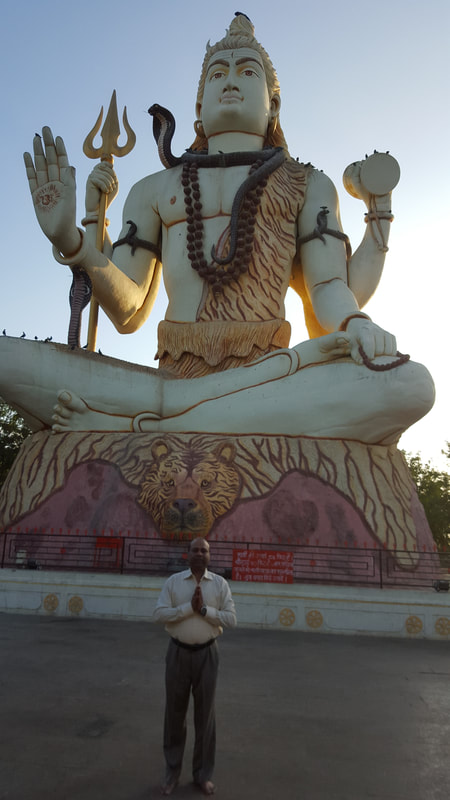
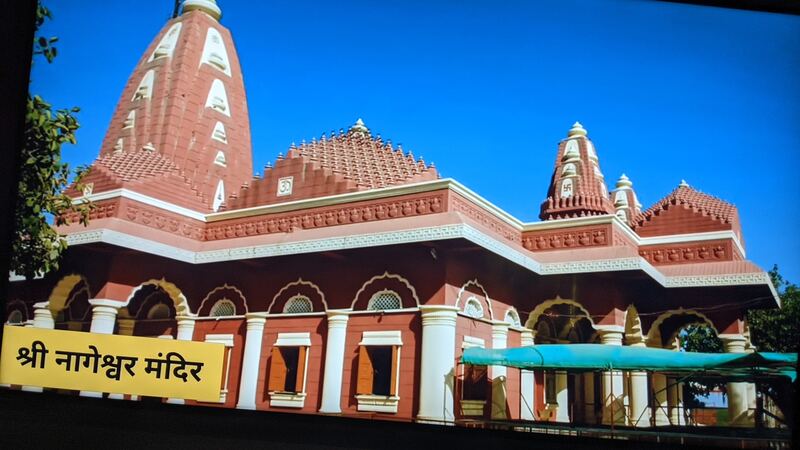
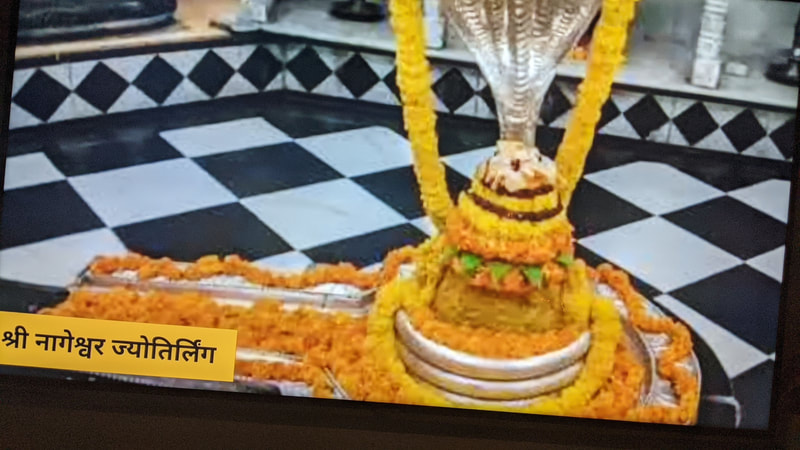
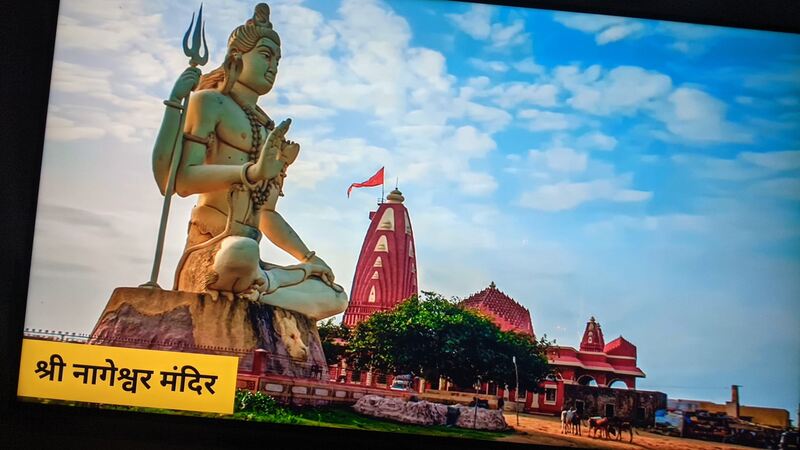
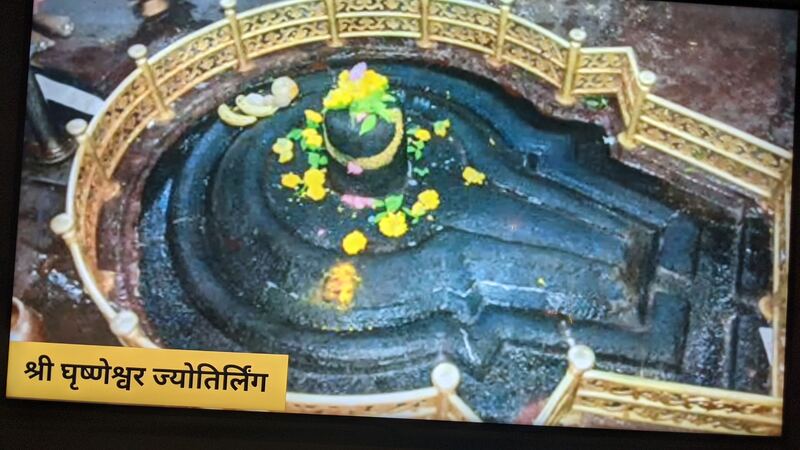
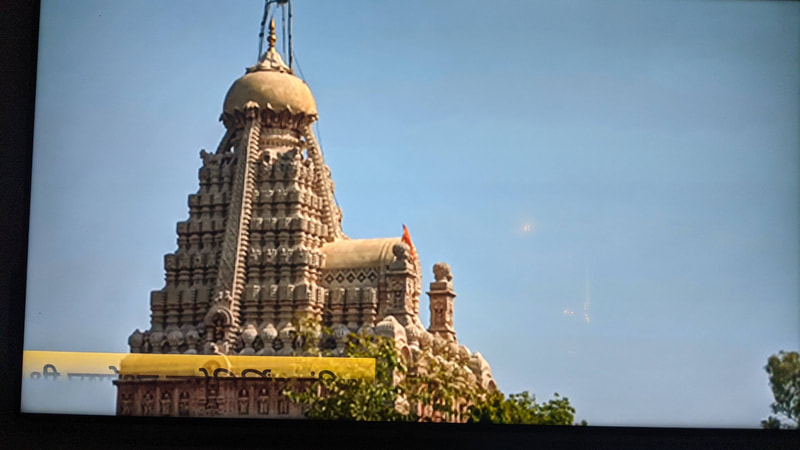
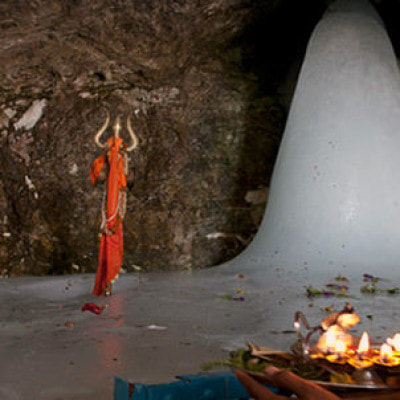
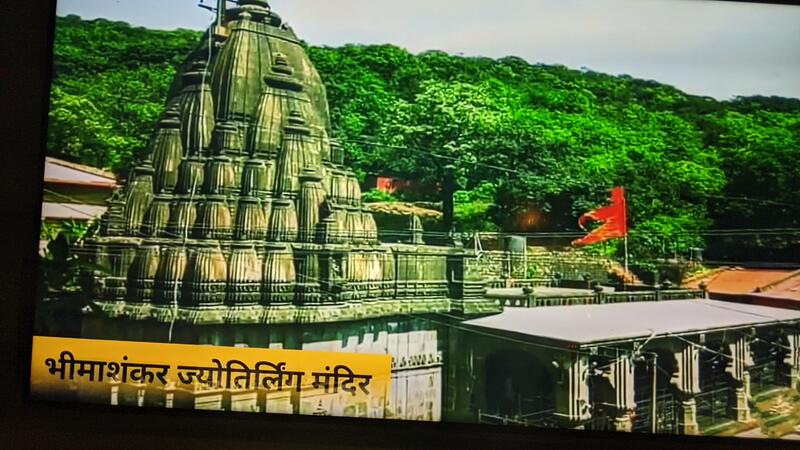
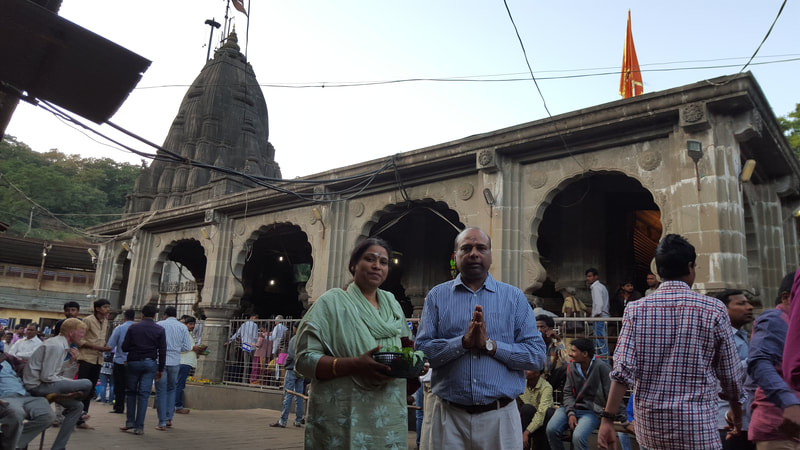
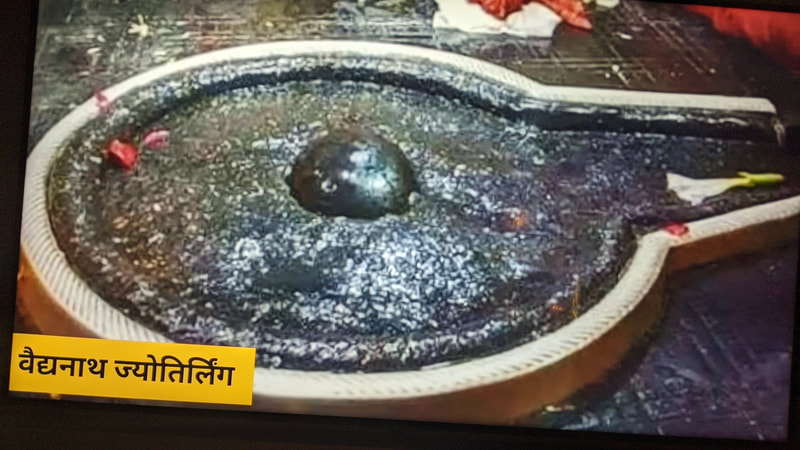
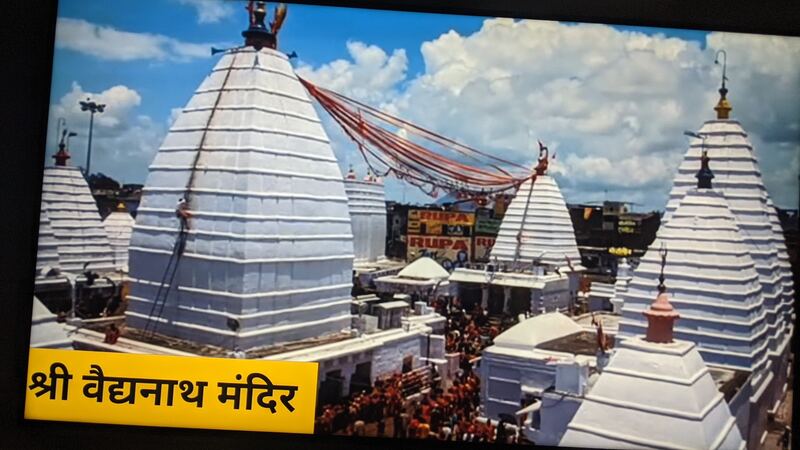
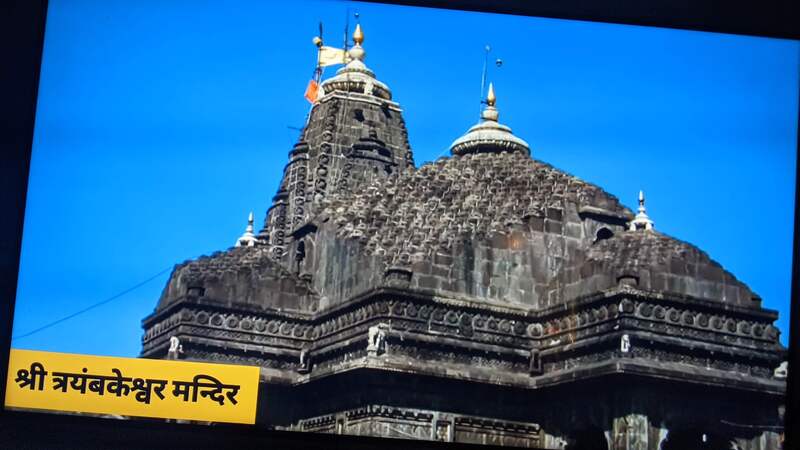
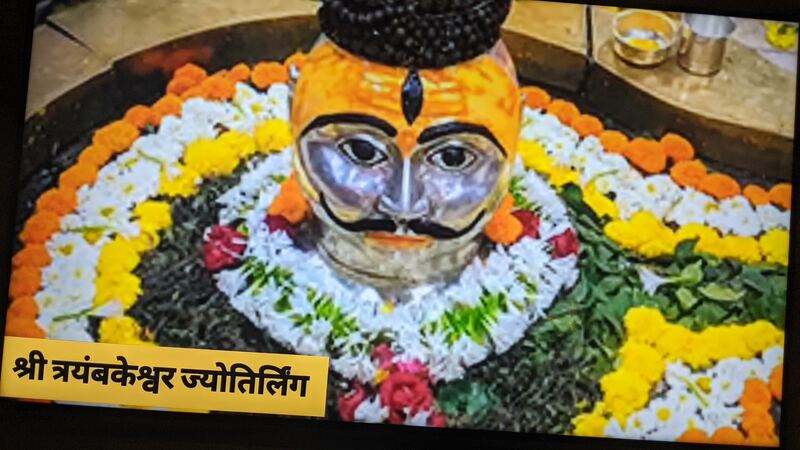
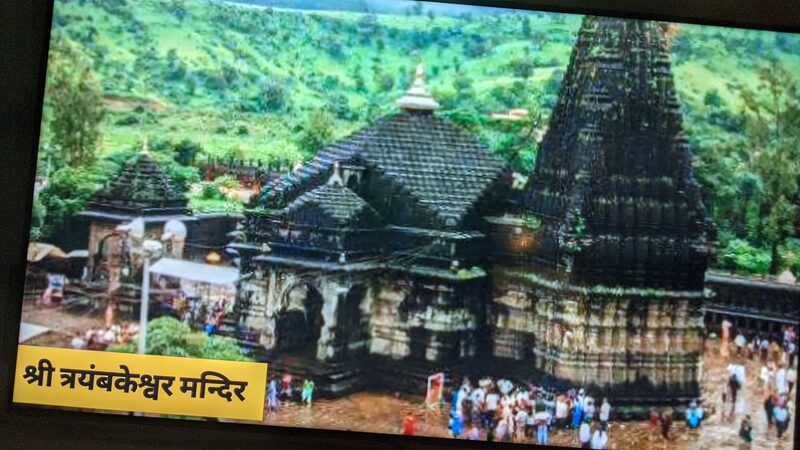
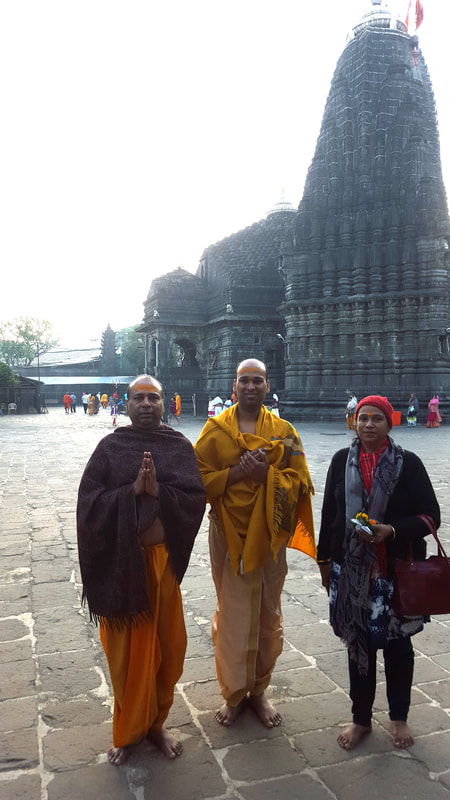
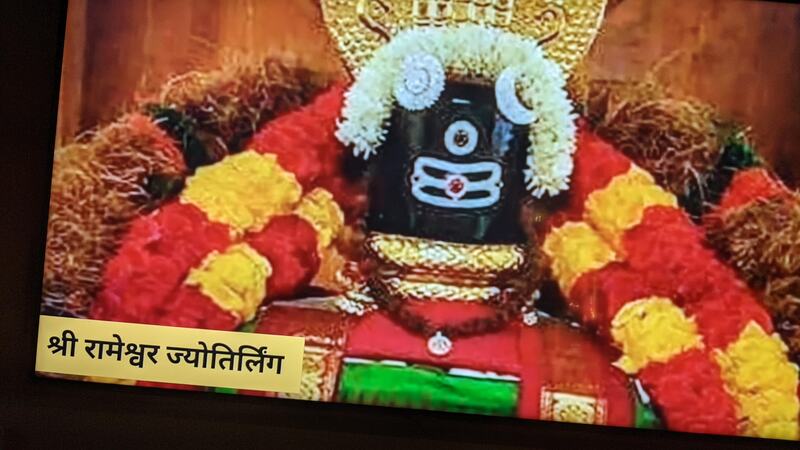
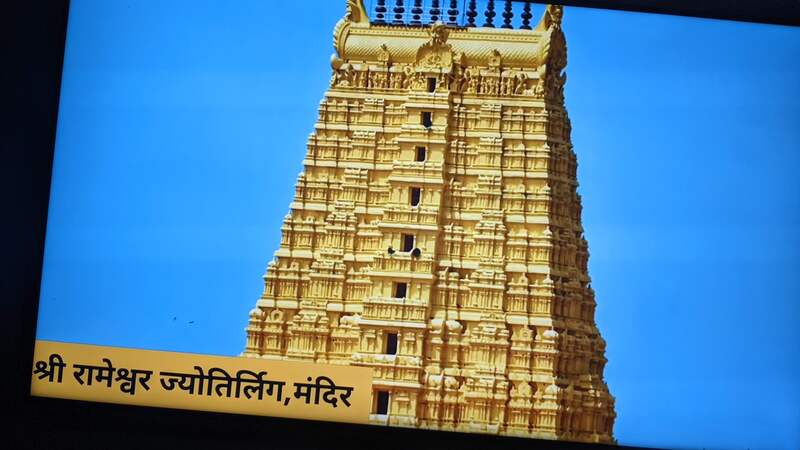
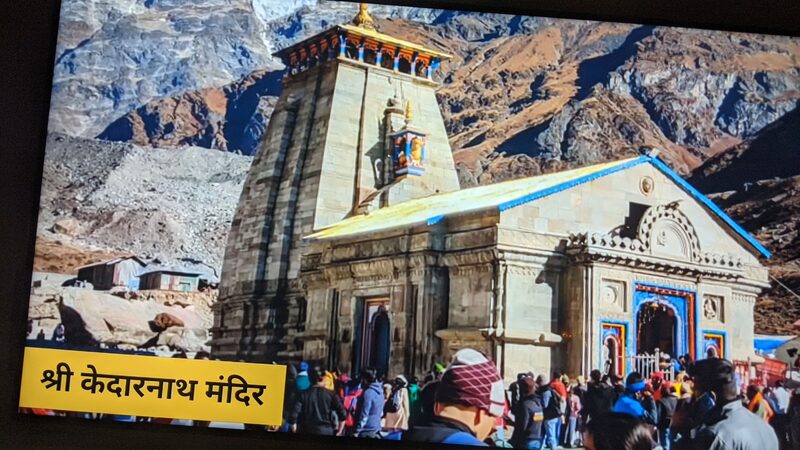
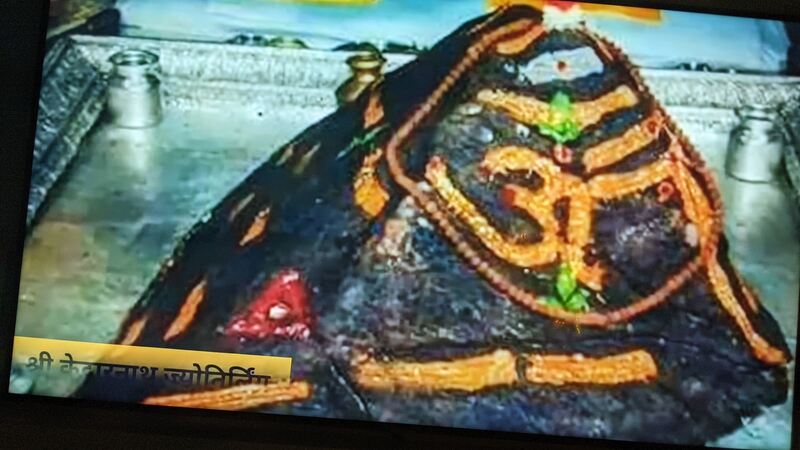
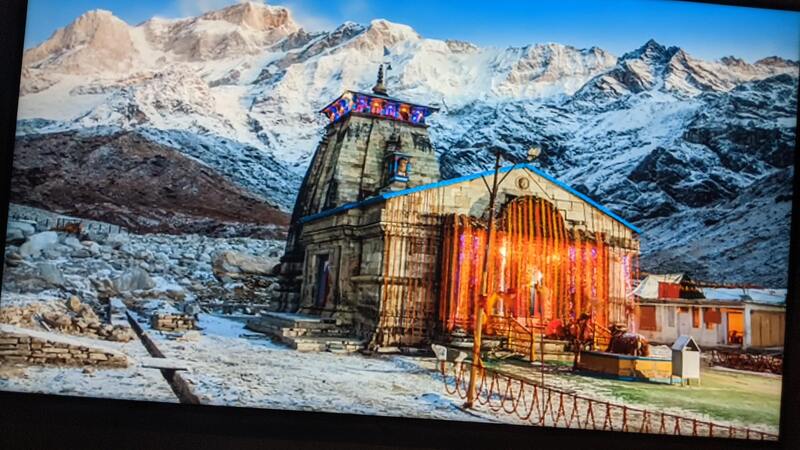
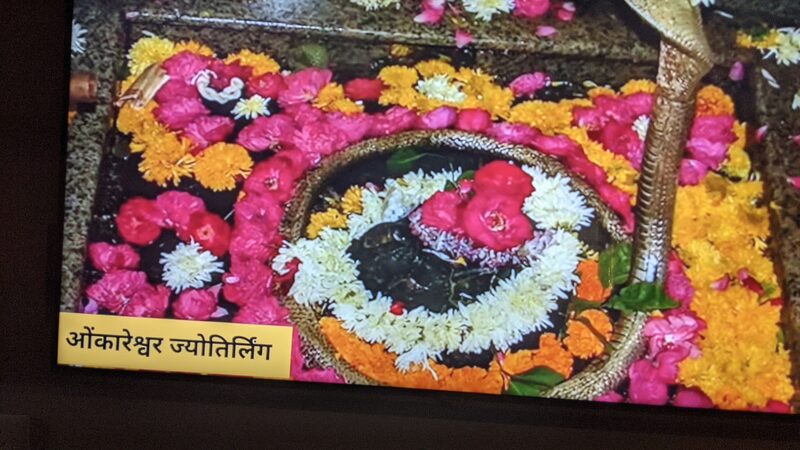
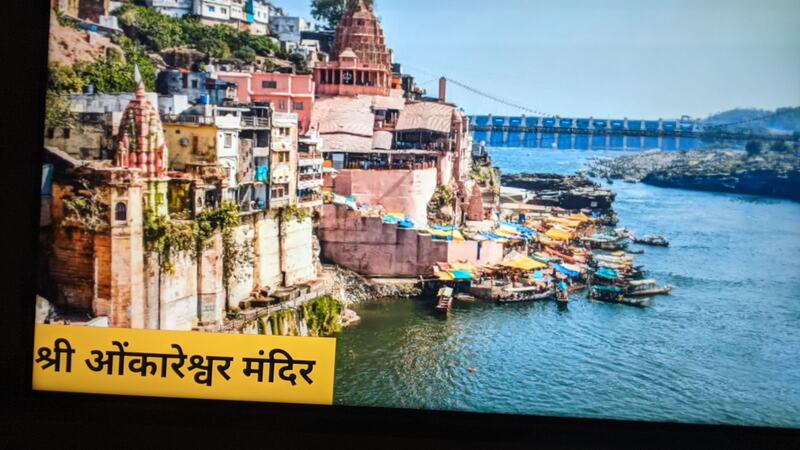
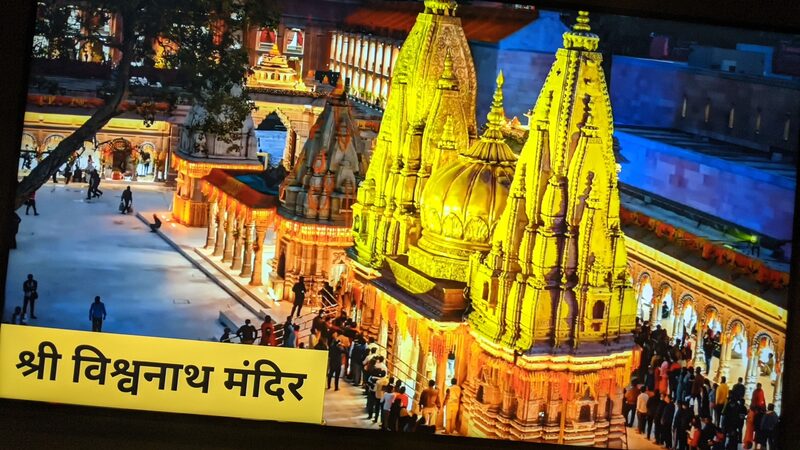
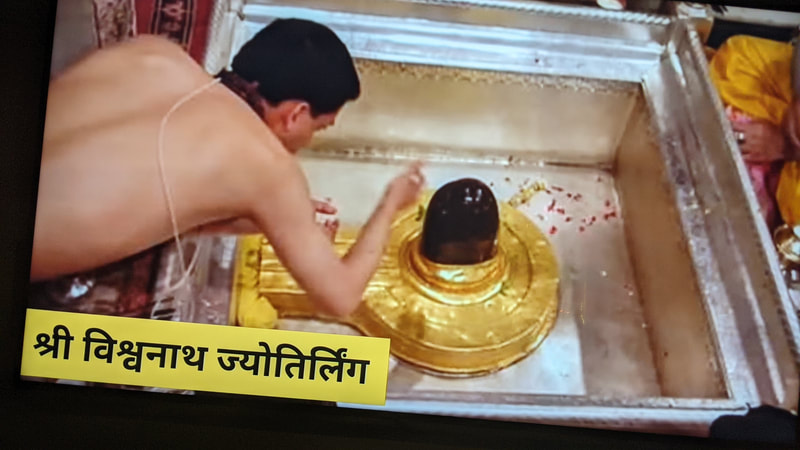
 RSS Feed
RSS Feed